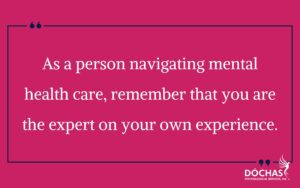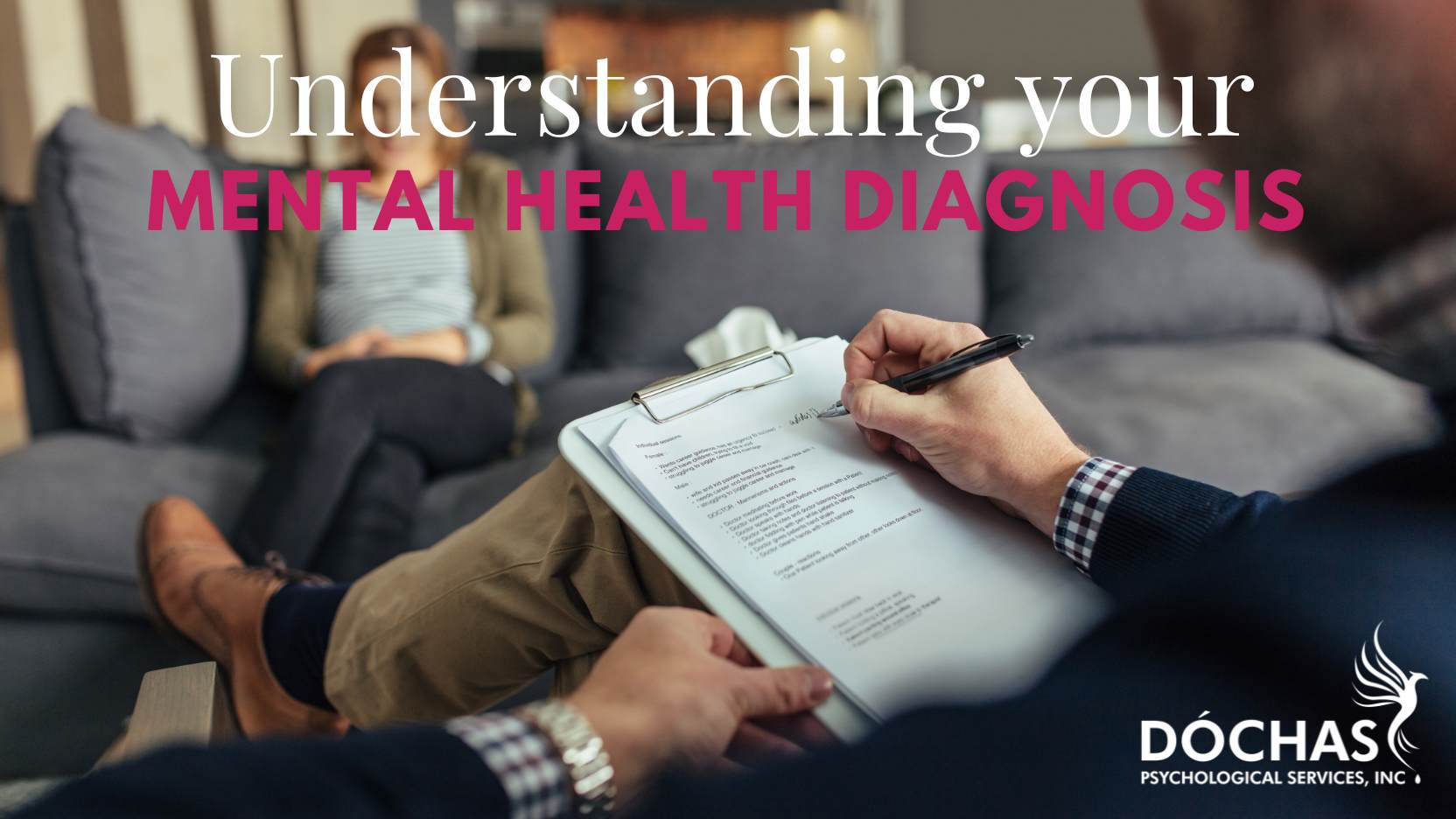Have you heard abbreviations like ADHD, MDD, GAD, PTSD, OCD or BPD? Each acronym is shorthand for a different mental health diagnosis that represents a variety of patterns in thoughts, feelings, and behaviours. As awareness of mental health issues grows, these terms become more familiar. However, for individuals who receive multiple diagnoses, or differing diagnoses from different healthcare practitioners, it can feel overwhelming, almost like carrying around an alphabet of problems.
It’s Rachael on the blog this week, I’ll discuss how diagnoses are made, the challenges healthcare professionals face in accurately identifying these conditions, and how people may end up with multiple diagnoses.
Watch my video or continue reading for more details!
The Role of the DSM in Diagnosis
In North America, mental health professionals primarily rely on the Diagnostic and Statistical Manual of Mental Disorders (DSM) to guide diagnosis. The most recent edition, the DSM-5-TR, provides detailed descriptions of mental health conditions based on observed patterns that cause significant distress or impairment in daily life. This structured approach helps clinicians categorize symptoms and understand disorders, but it also comes with some challenges.
The Diagnostic Process
When making a diagnosis, a qualified healthcare provider considers all aspects of a person’s experience, thoughts, feelings, behaviours, and even physical symptoms, to determine if they meet the criteria for a specific condition. Additionally, they evaluate whether these symptoms disrupt the person’s life significantly. For instance, some anxiety is normal, but an anxiety disorder requires a more persistent pattern that is impacting functioning or causing significant distress.
Clinicians aim to identify the mental health disorder that best encompasses the symptoms an individual is experiencing. To gather this information, they may use a range of tools, including reviewing medical files, conducting interviews, using self-assessment questionnaires, or applying formal assessment methods when needed.
Challenges in Diagnosing Mental Health Conditions
Diagnosing mental health disorders is complex, and healthcare professionals face several challenges with ensuring accuracy:
- Fluctuating Symptoms: Symptoms can change over time or vary across different situations, making it difficult to assess whether they form a consistent pattern.
- Interpretation Variability: Each clinician may have different perspective and interpretations of disorders and symptoms leading to differences in diagnosis.
- Limited Initial Information: Clients may only disclose certain symptoms, particularly in initial sessions, making it hard to form a complete picture early on.
- Symptom Overlap: Many mental health conditions share similar symptoms, which can blue the lines between them. For example, hypervigilance in post traumatic stress disorder (PTSD) can appear similar to anxiety, and racing thoughts could be a sign of anxiety or attention-deficit/hyperactivity disorder (ADHD)
Why Multiple Diagnosis Occurs
One common reason for multiple diagnosis is comorbidity. Comorbidity is the presence of two or more conditions. A person may be diagnosed with multiple conditions if all their symptoms cannot be explained by one diagnosis and if those additional symptoms are causing significant distress or impairment.
Another reason multiple diagnosis occurs is the differing interpretations of healthcare providers. For example, a doctor may diagnose someone with an anxiety disorder, but later, a psychologist may recognize the symptoms as stemming from PTSD. If the psychologist doesn’t clearly communicate this interpretation to both the client and their doctor, the client may end up believing they have both PTSD and an anxiety disorder, leading to confusion.
The Importance of Diagnosis and Reassessment
Diagnosis plays a critical role in informing treatment planning, insurance coverage, and access to resources for help. A clear and accurate diagnosis can help tailor an individualized treatment plan that aligns with a person’s unique need. However, diagnosis are not static, they should be reassessed over time as symptoms change, new information becomes available and as the client progresses through treatment.

Don’t hesitate to ask questions, seek clarification, or request further information about your diagnosis. Understanding why a healthcare professional feels a particular diagnosis fits your symptoms can empower you in your journey to wellness.
Final Thoughts
The process of diagnosing mental health conditions is complex and evolving, with many factors that can affect the accuracy and clarity of a diagnosis. By understanding the diagnostic process and remaining engaged in discussions with your providers, you can take an active role in managing your mental health. Knowing that diagnoses can change with time and insight, it’s important to view them as tools for understanding, not labels that define you.
If you’d like help understanding your diagnosis, feel free to reach out to Dóchas at 780-446-0300 or info@dochaspsych.com. Book an in-person (Spruce Grove) or virtual (across Alberta) appointment with one of our therapists here.
About Dóchas Psychological
Dóchas Psychological Services is a well-established and trusted therapy clinic located in Spruce Grove, Alberta. At Dóchas we value the idea that everyone deserves a safe space. Through connection and education, our team works hard to build a trustworthy relationship with each of our clients. It is our goal to create a community for our clients to feel like they belong.
Disclaimer
Information provided through Dóchas Psychological Services blogs or vlogs is meant for educational purposes only. They are NOT medical or mental health advice. You can read more about our disclaimer here.









